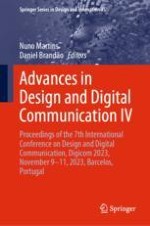This book reports on research findings and practical lessons featuring advances in the areas of digital and interaction design, graphic design and branding, design education, society and communication in design practice, and related ones. Gathering the proceedings of the 7th International Conference on Digital Design and Communication, Digicom 2023, held on November 9-11, 2023, as a hybrid event, in/from Barcelos, Portugal, this book continues the tradition of the previous ones reporting on new design strategies to foster digital communication within and between the society, institutions and brands. By highlighting innovative ideas and reporting on multidisciplinary projects, it offers a source of inspiration for designers of all kinds, including graphic and web designers, UI, UX and social media designers, and to researchers, advertisers, artists, and brand and corporate communication managers alike.
